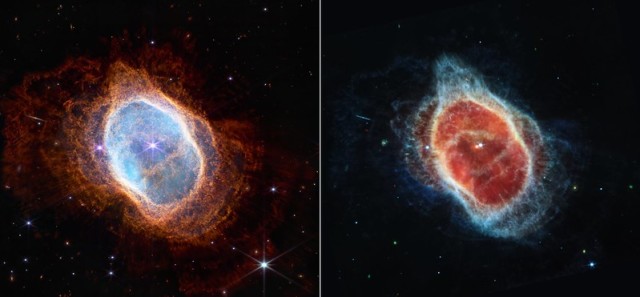The team of the James Webb Space Infrared Observatory presented the first set of scientific data obtained by the observatory. It includes images of the star formation region, a planetary nebula, a compact group of galaxies, as well as spectra of the atmosphere of hot Saturn and distant galaxies. The press briefing was broadcast on Youtube.
After 25 years of development, James Webb was launched into space in December last year, and a month later it entered orbit around the second Lagrange point in the Sun—Earth system. On July 11, 2022, the observatory officially launched a scientific program, and in the evening of the same day the first scientific image was published .
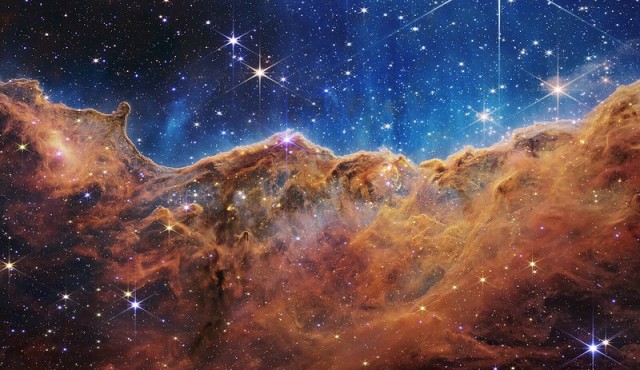
A snapshot of a section of the Keel nebula.
Image source: NASA, ESA, CSA, and STScI
On July 12, new scientific data obtained by the observatory were published. There are three pictures among them:
- The Keel nebula, which is one of the largest star-forming regions in the Milky Way and is located 7.6 thousand light-years from the Sun in the constellation of Keel. The nebula contains a large number of massive stars and scattered star clusters, including the famous double superheavy Eta Keel system, surrounded by the Homunculus nebula.
- The NGC 3132 Southern Ring nebula. This is a planetary nebula, which is the discarded outer gas shells of a Sun-like star. In the center of the nebula is a white dwarf, its diameter is almost half a light-year, and the nebula is located about 2 thousand light-years from the Sun.
- The compact group of galaxies is the Stefan Quintet, discovered in 1877. It is located at a distance of about 290 million light-years from the Sun in the constellation Pegasus and consists of four galaxies. The fifth galaxy is much closer to the Milky Way, and its image is only projected onto the group for an earthly observer.
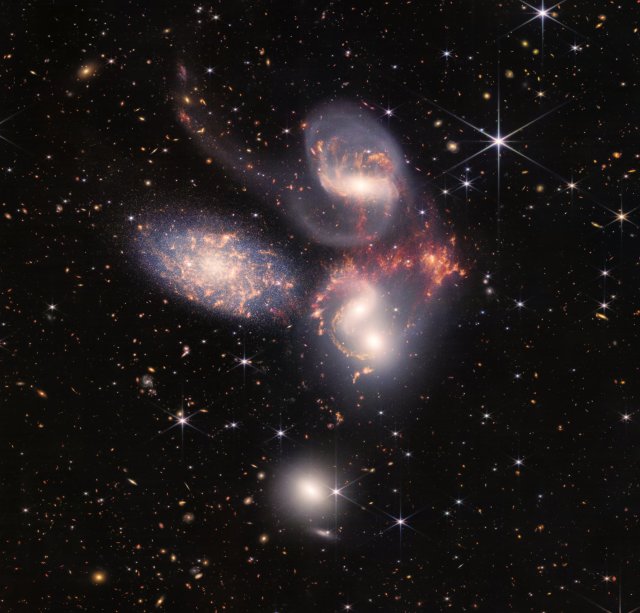
A snapshot of Stefan's Quintet.
Image source: NASA, ESA, CSA, and STScI
In addition to the images, the transmission spectrum of the atmosphere of the exoplanet WASP-96b was published, which belongs to the cloudless hot Saturns and orbits a sun-like star in the constellation Phoenix 980 light-years from Earth. The spectrum was obtained during the passage of the planet through the disk of its star, at this moment part of the star's radiation is absorbed by various elements in the planet's atmosphere, which allows us to judge the composition of the atmosphere. In addition, scientists have shown the spectra of galaxies that existed in the early universe.
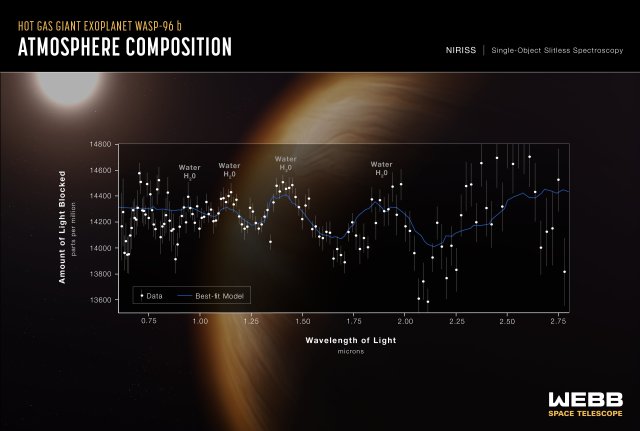
The spectrum of the atmosphere WASP-96b.
Image source: NASA, ESA, CSA, and STScI
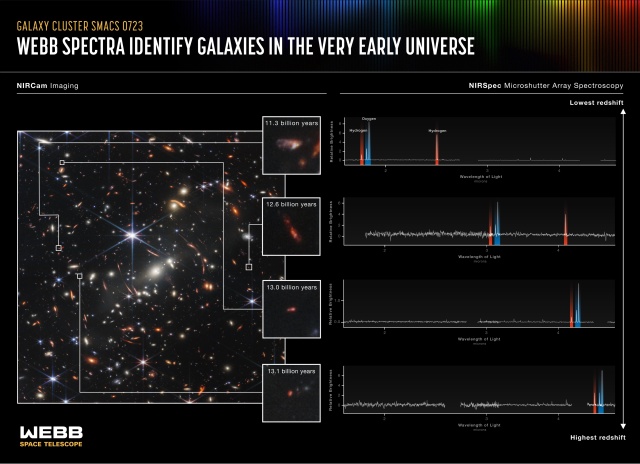
Spectra of galaxies that existed in the early universe.
Image source: NASA, ESA, CSA, and STScI
The observatory will explore a variety of objects in the Universe in the infrared wavelength range, continuing the observation programs of Hubble and Spitzer. We told you more about the tasks of "James Webb" and its device in the material "Fly and see" .
Alexander Voityuk
